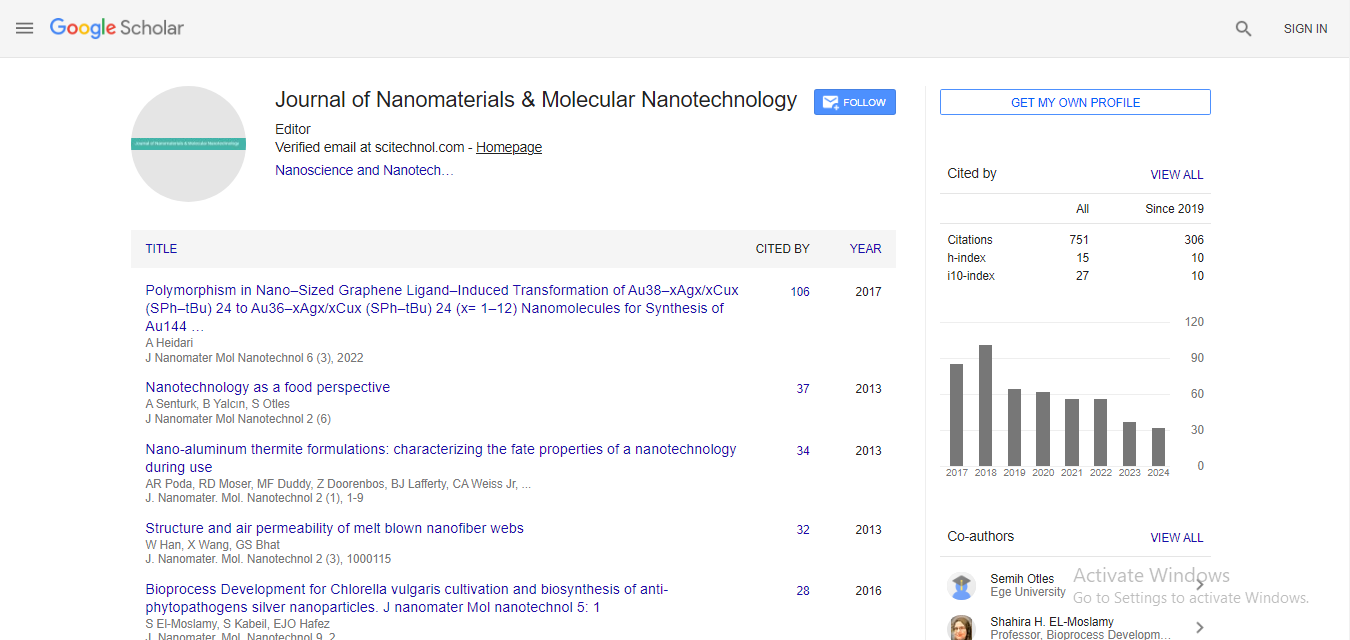Why carbon nanoparticles are futuristic excipients for nanomedicine application?
Santosh K. Misra
IITK, India
: J Nanomater Mol Nanotechnol
Abstract
Statement of the Problem: Even after being in development from many decades, very few nanomedicines have reached to clinic. Some of the barriers in this regard are lower stability, less selectivity, lack of traceability and high variability in human subjects which may decide final outcome of nanomedicine therapy. Introduction of theranostic characteristics in nanomedicines could provide the necessary optimization for better translation. This requires inclusion of optimized size, surface chemistry, stability, optical property, cellular entry and intracellular fate as required in case-to-case basis. Carbon nanoparticles (CNP) have captured the space with possibility of gaining most of these characteristics. Methodology & Theoretical Orientation: CNPs are synthesized by oxidizing various economical carbon sources using thermal or microwave methods. They are characterized for hydrous size, surface charge, stability, anhydrous morphology, surface chemistries, degradability, optical properties, cellular entry and intracellular abundance by conventional laboratory methods. Loading of various drug molecules could be achieved by co-preparation, post-coating or post-conjugation methods. Findings: Carbon nanoparticles are reported to be spheroids of a wide range of nanoscale sizes varying from 5 to 200 nm. The gained surface chemistries are hydroxy, carbonyl, carboxylic and amine functionalities based on used raw materials for synthesis. Surfaces charges for CNPs vary from high negative to high positive with zeta potentials ranging from -50 to +50 mV. CNPs are found to absorb in UV to NIR range of electromagnetic radiation and emit efficiently on respective higher wavelengths. In vitro studies reveal that CNPs are found to internalize via different endocytotic pathways depending on surface chemistries and could be tracked by various cell imaging methods. In animal studies, accumulation of CNPs is in tumor tissues and effectively inhibits the growth of cancerous tumors. Conclusion & Significance: A suitable modified CNP can be potential excipients with wide range of sizes, surface chemistries, optical property, in vitro and in vivo feasibilities for futuristic nanomedicine applications including oncotherapy with personalized approach.
 Spanish
Spanish  Chinese
Chinese  Russian
Russian  German
German  French
French  Japanese
Japanese  Portuguese
Portuguese  Hindi
Hindi 



